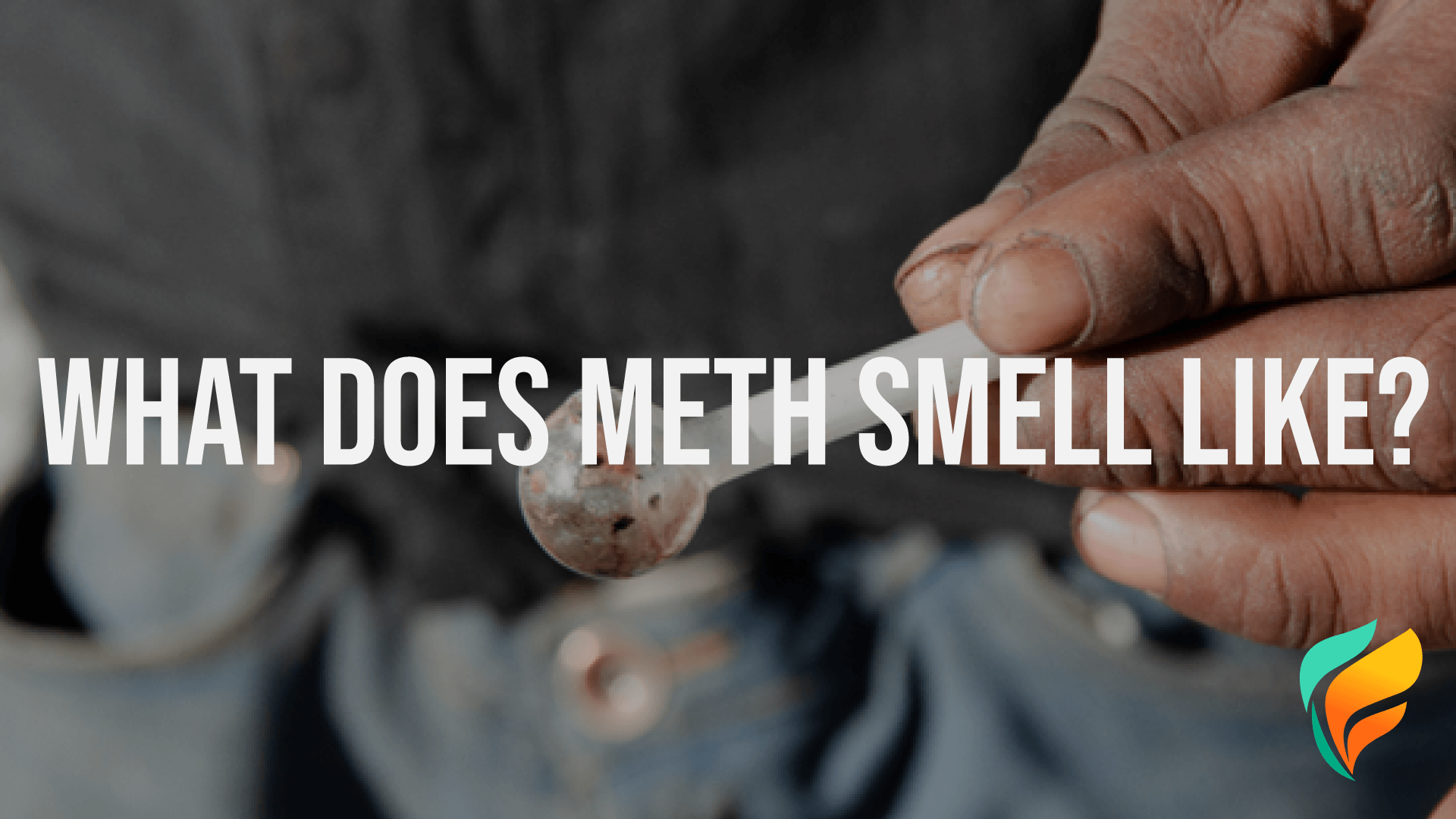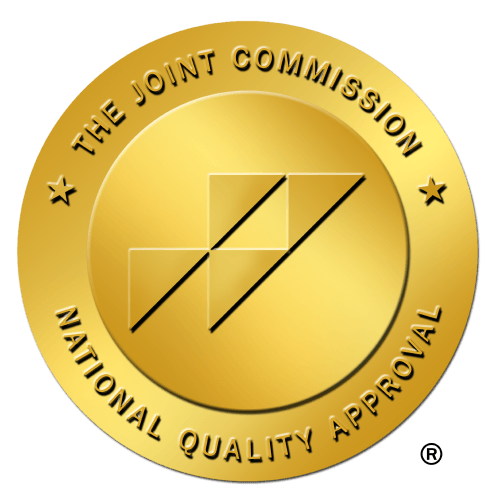What Does Meth Smell Like? How To Identify Meth Use By Smell


What does meth smell like? When smoked (and manufactured) meth has a distinct odor. Learn why the smell of meth is a sign of addiction in our blog.
Meth use and addiction have been a concern for decades in the United States. While the opioid crisis has received significant attention recently, methamphetamine addiction remains a significant problem, particularly in certain regions.
This problem has been magnified by the presence of P2P meth.
Historically, meth addiction has been more prevalent in rural and suburban areas but has also affected urban areas. States such as Oklahoma, Arkansas, and Missouri have reported high meth use and addiction rates. However, meth abuse is not limited to these regions, as it has spread nationwide.
Naturally, there's concern about how to recognize meth abuse. One of the questions many people ask is what does meth smell like?
What Does Meth Smell Like?
Meth itself is generally odorless when in its pure form. However, various chemicals and solvents are used during the production process, which can emit strong and unpleasant odors. The specific smell associated with meth production can vary depending on the methods and chemicals involved.
Illicit meth manufacturing sites, commonly called "meth labs," often have a distinct chemical smell described as a combination of strong and pungent odors, such as ammonia, acetone, solvents, and other chemical compounds.
These chemicals and reactions occurring during the synthesis process can release volatile compounds and gases that contribute to the odor associated with meth labs. This odor can be overwhelming and unpleasant, often compared to the smell of cat urine, rotten eggs, or solid industrial chemicals.
The specific smell can vary depending on the production methods used, the quality of chemicals employed, and the conditions under which methamphetamine is produced.
Why Is Meth Abuse A Problem?
Meth can have devastating effects on users, their families, and communities. It contributes to numerous social and health-related problems, including increased crime rates, domestic violence, child neglect, and the spread of infectious diseases like HIV and hepatitis due to needle-sharing among users. Meth overdose can lead to severe health complications, including cardiovascular problems, stroke, and organ failure.
However, compared to opioids, meth overdose deaths have been relatively lower in recent years. Treating meth addiction can be challenging due to the drug's highly addictive nature. Comprehensive treatment programs that include behavioral therapies, counseling, and support groups have shown some success in helping individuals recover from meth addiction.
Are You Struggling with Mental Health or Addiction?
We Can Help. Call Us Now!
CALL: 877-839-1772
What Does Meth Smell Like: Are There Different Types of Meth?
Meth typically refers to a specific drug, but there are variations in its production methods, purity levels, and forms. Following are some different types of meth that are commonly encountered:
Crystal Meth
Crystal meth is a form of meth that appears as transparent or bluish-white crystals. It is the most potent and pure form of methamphetamine. Crystal meth can be smoked, snorted, injected, or swallowed.
Powdered Methamphetamine
Meth powder can vary in color, texture, and purity. It is typically a white or off-white powder that can be snorted, dissolved in water, injected, or swallowed. In addition, the purity levels of meth powder can vary, with higher purity indicating a stronger and more potent form.
Meth Tablets or Pills
Meth can be pressed into tablet or pill form, often called "meth pills." These pills may contain varying amounts of methamphetamine mixed with other substances or additives. Meth pills are commonly associated with illicit drug markets in certain regions, such as Southeast Asia.
Liquid Meth
Meth can be dissolved in a liquid, typically injected. This form of meth is less common than other forms but can still be encountered in certain contexts.
The different forms of meth can vary in potency, purity, and route of administration, which can affect the intensity and duration of the drug's effects.
What Does Meth Smell Like? Are There Different Colors of Meth?
Methamphetamine is a controlled substance and typically a white crystalline powder in its pure form. However, color variations can occur due to various factors during the production process or subsequent adulteration. Here are some reasons why methamphetamine may be available in different colors:
Meth can be mixed or cut with other substances or impurities during production or distribution. These added substances can give meth a different color. For example, higher-purity meth tends to be whiter or clearer. In contrast, lower-purity or adulterated meth can be yellowish, brownish, or off-white.
What Do Meth Colors Mean?
The presence of contaminants, byproducts, or residual chemicals from the production process can affect the color of meth. For example, some chemicals used in meth production, such as iodine or pseudoephedrine, can contribute to a yellowish or brownish tint.
Meth may be intentionally colored with dyes or other additives. These additives can alter the appearance of the drug, making it more visually distinct or appealing to certain users. However, it's important to note that using colorants or additives is not common and may indicate a more sophisticated production process.
The color of methamphetamine does not provide reliable information about its purity, potency, or potential hazards. The use of methamphetamine in any form is illegal and highly dangerous due to its addictive nature and harmful effects on health.
Are You Struggling with Mental Health or Addiction?
We Can Help. Call Us Now!
CALL: 877-839-1772
What Does Meth Smel Like: What Contributes to the Smell of Meth
Yes, prolonged meth use can lead to certain physiological changes in individuals that may contribute to developing a distinct odor. However, this odor is not exclusive to meth abuse and can also be present with other forms of substance abuse.
Listed below are some factors that can contribute to the development of a distinct odor in individuals who abuse meth:
Poor Hygiene
Meth use can lead to neglect of personal hygiene, including infrequent bathing or showering, resulting in body odor.
Increased Sweating
Meth is a stimulant that increases heart rate and body temperature, leading to excessive sweating. This can contribute to an unpleasant body odor.
Skin-Related Issues
Meth use can cause skin problems such as acne, rashes, and open sores due to the drug's effects on blood vessels and the body's immune system. These skin issues can produce an unpleasant odor.
Dental Hygiene Issues
Meth use can cause severe dental problems, often called "meth mouth." This condition involves tooth decay, gum disease, and oral hygiene neglect, leading to bad breath and an unpleasant oral odor.
The development of a distinct odor is just one potential sign or symptom of methamphetamine abuse. Other physical and behavioral changes may also be present. If someone you love is struggling with meth addiction, it's crucial to encourage them to seek professional help and support from healthcare providers or addiction treatment specialists.
What Does Meth Smell Like? What to Do If Something Smells Like Meth
Suppose you suspect that you have come across a substance or an area that smells like methamphetamine or a meth lab. In that case, it's important to prioritize your safety and take appropriate action. Here are some steps you can consider:
Leave the Area
If you encounter a solid chemical odor that resembles methamphetamine or suspects the presence of a meth lab, it is crucial to leave the area immediately. Avoid inhaling or coming into direct contact with the substance.
Do not investigate or handle the situation yourself: Meth labs can be dangerous due to the volatile and toxic nature of the chemicals involved. Therefore, it's essential not to attempt to investigate, touch, or handle any potentially hazardous materials. Disturbing a meth lab or its components can lead to explosions, fires, or exposure to harmful substances.
Ensure Your Safety
Move to a well-ventilated area away from the odor. If you experience symptoms such as difficulty breathing, dizziness, nausea, or eye irritation, seek fresh air and call emergency services.
Report Your Suspicions
Contact local law enforcement or emergency services and report your suspicions. Provide them with the details of the situation, including the location, description of the odor, and any other relevant information you may have observed. Authorities are trained to handle such situations safely and will take appropriate action.
Your safety should always be the priority. Do not put yourself at risk by trying to handle the situation on your own. Instead, let law enforcement or other appropriate authorities investigate and address the issue.
Are You Struggling with Mental Health or Addiction?
We Can Help. Call Us Now!
CALL: 877-839-1772
What Are the Dangers of Being Exposed to a Meth Lab?
Exposure to a meth lab can pose significant risks to your health and safety due to the hazardous chemicals and processes involved in meth production.
Chemical Hazards
Meth labs often use a variety of toxic chemicals, such as solvents, acids, bases, and flammable substances. These chemicals can cause skin, respiratory problems, eye and throat irritation, and even chemical burns. Prolonged or high-level exposure can result in more severe health effects, including organ damage.
Fire and Explosion Risks
The production process of meth involves volatile and flammable chemicals. The presence of these substances increases the risk of fires and explosions. Even a small spark or open flame near a meth lab can lead to a dangerous explosion.
Toxic Fumes and Gases
Meth labs produce toxic fumes and gases that can be inhaled, leading to respiratory problems, dizziness, nausea, headaches, and even loss of consciousness. Some chemicals used in meth production, such as ammonia or hydrochloric acid, can release toxic fumes that are harmful when inhaled.
Contamination of Surfaces
Meth labs can contaminate surfaces, including walls, floors, and furnishings, with harmful chemicals. These surfaces may continue to release toxic substances even after the lab is no longer in operation, posing risks to individuals who come into contact with them.
Environmental Hazards
Meth labs often involve improper disposal of chemicals and waste products, leading to environmental contamination. These contaminants can enter soil, groundwater, and nearby water bodies, posing risks to ecosystems and public health.
Exposure to a meth lab should be taken seriously, and immediate action should be taken to ensure your safety. If you suspect the presence of a meth lab or have been exposed to one, leave the area immediately, avoid touching any suspicious materials, and contact local law enforcement or emergency services to report the situation. They are trained to handle such situations safely and can provide appropriate guidance and assistance.
What Are the Risks of Getting Addicted to Meth?
Meth is a highly addictive substance, and the risks associated with meth addiction can have severe and long-lasting effects on various aspects of a person's life.
Here are some of the risks and consequences of meth addiction:
Physical Health Effects
Prolonged methamphetamine use can lead to significant physical health problems. These may include cardiovascular issues, such as rapid heart rate, irregular heartbeat, high blood pressure, and increased risk of heart attack or stroke.
In addition, chronic meth use can also cause weight loss, dental problems (commonly known as "meth mouth"), skin infections, and increased susceptibility to infectious diseases due to weakened immunity.
Mental Health Issues
Meth abuse can lead to mental health problems and changes in brain function. It can cause persistent anxiety, paranoia, hallucinations, and delusions. Chronic meth use is also associated with an increased risk of developing mental health disorders such as depression and psychosis. These effects can persist even after stopping methamphetamine use.
Addiction and Dependence
Meth is very addictive, and repeated use can develop tolerance and dependence. Over time, individuals may require larger doses of meth to achieve the desired effects. In addition, trying to quit or reduce use can lead to withdrawal symptoms, including fatigue, depression, anxiety, increased appetite, and intense drug cravings.
Brain Damage
Meth abuse can result in long-term cognitive impairments, including problems with attention, memory, and decision-making abilities. These cognitive deficits can persist even after a person stops using meth.
Serious Legal and Medical Problems
Meth addiction can lead to various negative behavioral and social consequences. This may include strained relationships with family and friends, difficulties at work or school, financial problems, involvement in criminal activities to support the addiction, and an increased risk of engaging in risky behaviors such as unprotected sex or needle sharing, leading to the spread of infectious diseases like HIV or hepatitis.
Overdose and Death
Meth overdose can occur due to the drug's stimulant effects on the body, resulting in severe health complications and, in some cases, death. Symptoms of an overdose may include chest pain, rapid breathing, irregular heartbeat, seizures, high body temperature, and loss of consciousness.
Are You Struggling with Mental Health or Addiction?
We Can Help. Call Us Now!
CALL: 877-839-1772
Meth Addiction Seems Hopeless – It Isn’t. Reach Out Today to The Forge Recovery Center
With evidence-based treatment and support, living free from meth addiction is possible. Although no medications are approved by the Food and Drug Administration to comprehensively and permanently treat meth addiction, some behavioral therapies have proven effective.
The Forge Recovery Center makes successful use of behavioral therapies and more to effectively treat meth addiction. Guided by a trauma-informed philosophy, our addiction center is the perfect place to start building a new life free from meth addiction. We’ll be in your corner through the entire recovery process and beyond.
If you want to learn more about The Forge Recovery Center and our successful meth treatment program, reach out to us today.
Are You Struggling with Mental Health or Addiction?
We Can Help. Call Us Now!
CALL: 877-839-1772





